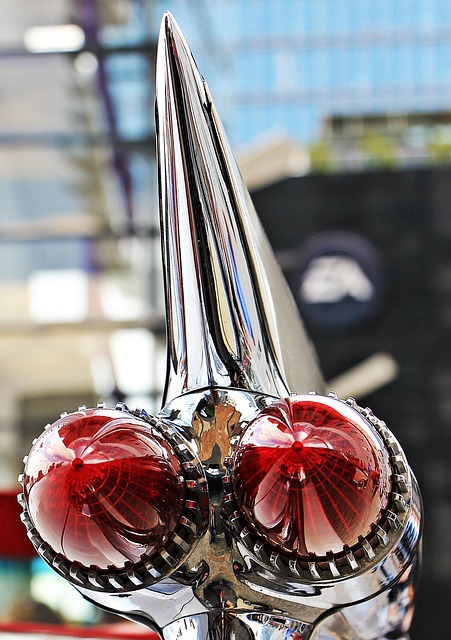Looking to register your car in California? This comprehensive guide breaks down the process step-by-step, ensuring a smooth experience. From understanding the registration requirements to gathering essential documents and partnering with a DMV vin verifier, we cover it all. Learn how to navigate the system efficiently and legally. By following these simple steps, you’ll be cruising on California’s roads in no time.
- Understanding the Registration Process
- Gathering Necessary Documents
- The Role of the DMV and VIN Verifier
- Steps to Register Your Vehicle in California
- Post-Registration Considerations and Tips
Understanding the Registration Process

Understanding the Registration Process in California
Registering a car in California involves several steps that can seem complex at first. It’s crucial to grasp each phase, from gathering necessary documents to ensuring your vehicle passes the required inspections. The process begins with visiting a California Department of Motor Vehicles (DMV) office or utilizing their online services. You’ll need key documentation like proof of ownership, identity, and insurance. Additionally, you must obtain a Vehicle Identification Number (VIN) verifier from an authorized source to facilitate accurate verification.
A significant part of the registration process is the VIN inspection. This involves checking the vehicle’s unique VIN number against state records to ensure its authenticity and history. You can opt for traditional, in-person VIN inspections or explore convenient alternatives like mobile VIN verification services, which allow you to obtain a digital report from the comfort of your home or on the go. By understanding these requirements and utilizing available tools like a DMV vin verifier, you’ll streamline the registration process and ensure your vehicle’s compliance with California regulations.
Gathering Necessary Documents

Before you begin the registration process, it’s crucial to gather all the necessary documents. In California, this typically includes your vehicle’s Registration Application (Form DVF 140), proof of insurance, and a valid driver’s license. Additionally, you’ll need the Vehicle Identification Number (VIN) from your car, which can be easily verified using a DMV VIN verifier or even a mobile VIN verification app for added convenience.
Ensure that your vehicle passes the state’s safety and emissions standards by arranging for a recent vin inspection if necessary. Some dealerships may offer this service, or you can opt for a mobile vin verifier to conduct the check right from your location, making the process more efficient and hassle-free.
The Role of the DMV and VIN Verifier

The Department of Motor Vehicles (DMV) plays a pivotal role in the car registration process in California. It serves as the central authority for issuing vehicle titles, registering drivers, and ensuring compliance with state regulations. One crucial component of this process involves the use of a Vehicle Identification Number (VIN) Verifier. This tool is employed to validate essential information about a car, such as its make, model, year, and history.
A VIN Verifier cross-references the unique 17-character VIN with state databases and national records to check for any discrepancies or outstanding issues. This step ensures that the vehicle is safe to register and helps prevent fraud. For added convenience, some services offer mobile vin inspection or verification, allowing owners to complete this crucial part of the registration process from the comfort of their homes or even while on the go.
Steps to Register Your Vehicle in California

Registering a car in California involves several straightforward steps. First, gather all necessary documents, including your vehicle’s registration from the previous state, proof of insurance, and a completed DMV form for new registrations or transfers. Next, visit a California Department of Motor Vehicles (DMV) office with your vehicle to complete an inspection, which includes a mobile VIN verifier to confirm the identity of your car using its unique Vehicle Identification Number (VIN).
After passing the inspection, you’ll need to fill out additional forms for title transfer and pay the registration fees. The DMV will issue a new registration certificate and license plate if applicable. For added convenience, consider using a mobile VIN verifier during the process, as it can expedite the inspection phase and ensure a smoother overall experience. Remember, proper vin inspection is crucial for maintaining your vehicle’s legal status in California.
Post-Registration Considerations and Tips

After successfully registering your car in California, there are several post-registration considerations to ensure a smooth ownership experience. One crucial step is to obtain a Vehicle Identification Number (VIN) verification, which can be done through the DMV or a trusted mobile VIN verifier. This process ensures that the vehicle’s details match the information provided during registration, preventing any potential issues in the future.
Additionally, keeping your registration and insurance documents up-to-date is essential. Regularly check for renewal notices and complete the process on time to avoid penalties. Consider using a mobile VIN inspection service for added convenience, as these applications can provide instant verification and offer peace of mind. Always keep accurate records and stay informed about California’s vehicle registration requirements.
Registering a car in California involves understanding the process, gathering essential documents, and interacting with the DMV and VIN verifier. By following the outlined steps and considering post-registration tips, you can ensure a smooth transition into California’s vehicle ownership. Remember to keep your documentation up-to-date and be prepared for potential digital or in-person interactions with the DMV, including VIN verification processes, to finalize your registration successfully.
